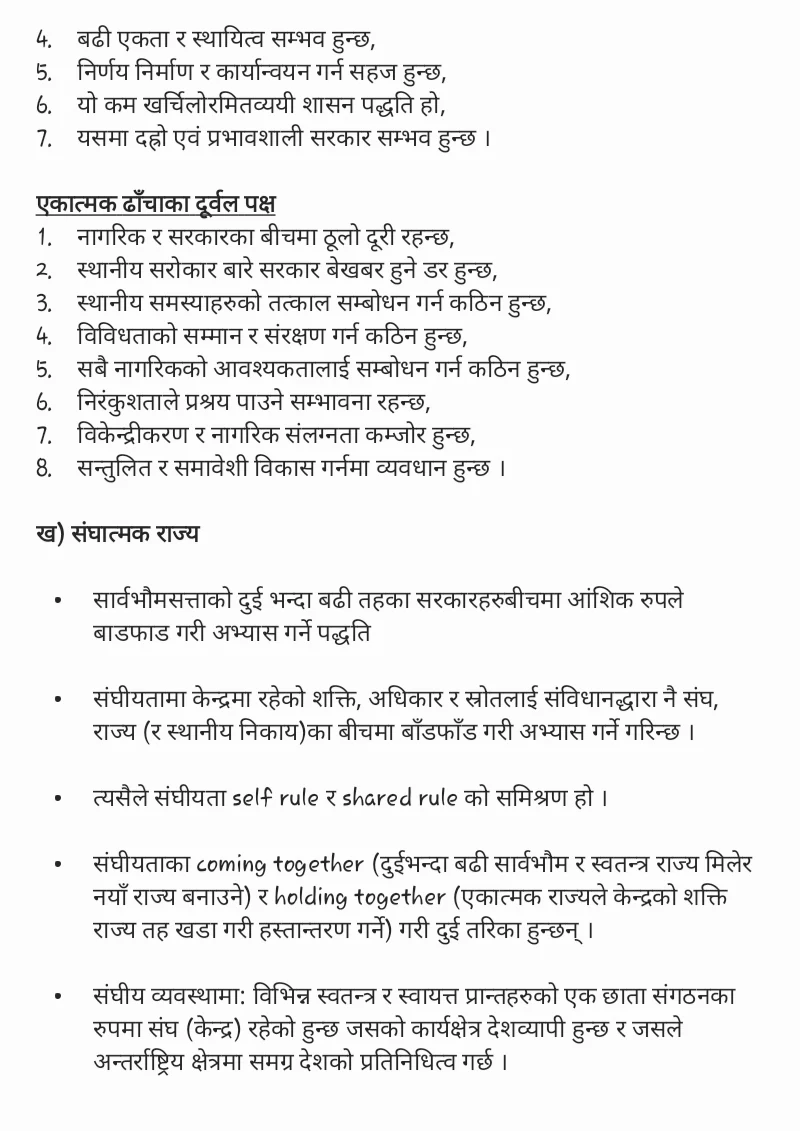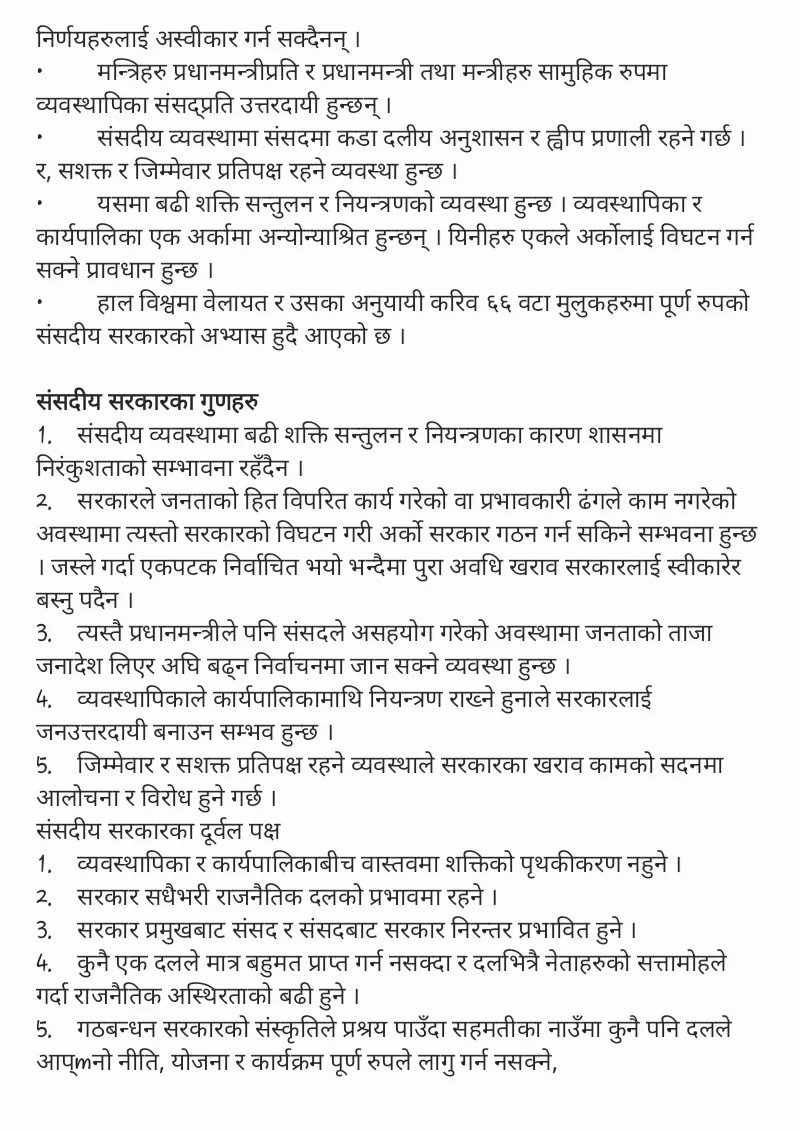Political Structure of Government (Structure of the State)
The political structure of the government refers to how the government is organized and how power is divided among different parts of the government.
The political structure of the government refers to how the government is organized and how power is divided among different parts of the government. In Nepal, the government is made up of three parts: the executive, legislative, and judicial branches.
The executive branch is responsible for carrying out the laws and is led by the President, who is elected by the Parliament. The real power lies with the Prime Minister, who is appointed by the President and is responsible for running the government.
The legislative branch is responsible for making laws and is made up of the Parliament. The Parliament is made up of two houses: the House of Representatives and the National Assembly. Members of the House of Representatives are elected by the people, while members of the National Assembly are appointed by the government.
The judicial branch is responsible for interpreting the laws and is made up of the court system. The highest court in Nepal is the Supreme Court, which is responsible for interpreting the Constitution and ensuring that the other branches of government follow the law.
Overall, the political structure of the government in Nepal is designed to ensure that power is distributed among different parts of the government and that the government works to serve the people of Nepal.























Join the conversation